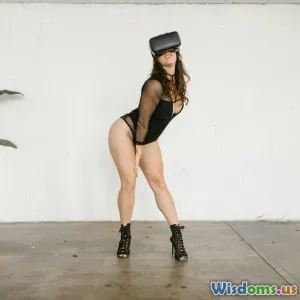
The Future of Filmmaking Technology
3 min read Explore the cutting-edge technologies shaping the future of filmmaking and photography. (0 Reviews)
The Future of Filmmaking Technology
As we move deeper into the 21st century, the landscape of filmmaking technology continually evolves, influenced by advancements in hardware, software, and the ever-expanding digital realm. Emerging technologies such as Artificial Intelligence (AI), Virtual Reality (VR), and drone technology are not only shaping how films are made but are also enhancing the viewer's experience in unprecedented ways. This article takes a comprehensive look at the future of filmmaking technology and its potential effects on creativity and storytelling.
An Era of Digital Transformation
Although cinema has been a powerful medium for over a century, the pace of innovation in camera technology, CGI, and post-production tools is accelerating. This transformation is driven by the need to adapt to new consumer preferences and the increasingly competitive entertainment landscape.
With streaming services like Netflix and Disney+ dominating the market, filmmakers are under pressure to produce high-quality, innovative content quickly and affordably. As a result, filmmakers are turning to new technologies to streamline production while enhancing the end product.
Artificial Intelligence in Filmmaking
AI is at the forefront of the filmmaking revolution. Its applications range from scriptwriting and editing to visual effects and even casting significant actors.
AI-Powered Scriptwriting
Tools powered by AI, such as ScriptBook, can analyze and predict the success of a script by examining various storytelling elements. These AI applications help screenwriters identify areas of improvement and maximize the potential appeal of their narratives. As evidenced by AI-generated screenplays gaining attention at film festivals, this technology could redefine how stories are told.
Smart Editing Solutions
AI-driven editing software, like Adobe Premiere Pro's Sensei feature, offers advanced tools that automatically generate highlights, suggest cuts, and even enhance color grading. These technologies lessen the burden on editors, allowing them to focus their creativity on fine-tuning the nuances of the film rather than the exhaustive pre- and post-production processes.
Virtual Reality (VR) and Augmented Reality (AR)
Virtual Reality and Augmented Reality are not just forming spaces for new stories; they are redefining the storytelling experience itself. With VR, audiences can step into the narrative and engage with the film environment in real time.
Immersive Storytelling
Projects like
Rate the Post
User Reviews
Popular Posts





















